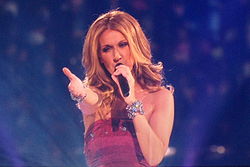Piano Sheets > Celine Dion Sheet Music > Power Of Love - The (ver. 1) Piano Sheet
Power Of Love - The (ver. 1) by Celine Dion - Piano Sheets and Free Sheet Music

About the Song
Other avaliable versions of this music sheet: Version 1 Version 2 Version 3
"The Power of the Dream" is a single by Cline Dion, released on August 20, 1996 in Japan.
"The Power of the Dream" was written and produced by David Foster and Babyface for the opening ceremonies of the 1996 Summer Olympics. Dion performed it in front of more than 100,000 people, in addition to over three and a half billion television viewers. She gave away the money she received for the occasion, to support Canadian athletes.
The music video shows Cline Dion performing the song during the opening ceremony of the 1996 Summer Olympics.
The single peaked at number 30 on the Oricon Singles Chart in Japan and was certified gold (75,000 copies sold). Although it wasn't released in other countries, many radio stations all over the world played "The Power of the Dream" and it even charted on some airplay charts. Cline Marie Claudette Dion Anglil (born March 30; 1968 in Charlemagne; Quebec) is a.
Download this sheet!
About the Artist

Random article
Music sheets - what is all about? Back in the 19th century, songs in the United States were popularized by musicians through music sheets. It was only in the 1950s when musicians started to bring music sheets to bands so they could play, allowing more people to hear their compositions.
Simply, a music sheet is musical composition in printed form. It is composed of unbound sheets of paper where a musical notation of a song is printed. Many associate it with popular music. However, musicians say popular songs are not the only ones written down on paper. Many classical songs were published in music sheets and classical musicians performed even unfamiliar songs with these printed compositions.
(More...)
